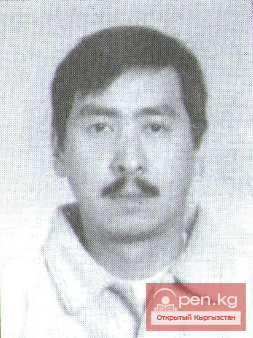Researchers of Central Asia
Throughout the centuries of studying the Tian Shan, it has been "assaulted" by travelers and scientists from more than 40 countries of the Old and New Worlds. It has been "besieged" from all four corners of the horizon. In ancient times, these were representatives of the Greco-Roman world and the Ancient East; in the Middle Ages — Arabs; and from the 18th century until the October Revolution — Russians, Germans, English, French, and others.
The first information about Kyrgyzstan can be found in the descriptions of the Byzantine Emperor Justin II's ambassador to the Turkic khan Istemi, Zimarkh of Cilicia (569 AD), the Arab explorer Abu Dulafa (842—843 AD), the 11th-century philologist Mahmud Kashgari, the Venetian merchant Marco Polo (1272—1273 AD), and other historical sources.
However, until the mid-19th century, the territory of Kyrgyzstan was not the subject of specialized scientific research. According to P. P. Semenov, the facts regarding the geography of Central Asia were "scarce and insufficient," and their geographical and geological study was in a "nascent state." The prominent researcher of Central Asia and the Tian Shan, G. E. Grumm-Grzhimailo, wrote in 1914: "These knowledge, if not equal to zero, were negligible."
The research of Chokan Chingizovich Valikhanov, a Kazakh scholar who knew local languages and customs, is of great significance. "Notes on the Kyrgyz" by Ch. Valikhanov, collected during the Issyk-Kul expedition in 1855, is the first major original research on Kyrgyzstan and the Kyrgyz people, conducted at the forefront of historical thought of that time. This encyclopedic monographic work covers a wide range of topics: "Territory and Borders," "Antiquities," "Trade," "Industry," "Lifestyle," "History and Historical Traditions," "Language," "Literature," "Religion," "Morals and Customs."
The collection of materials from the Issyk-Kul expedition was included in Ch. Valikhanov's book "Sketches of Dzhungaria" (1861).
The scholar's research opened up the heroic epic of the Kyrgyz people "Manas" to science.
Petr Petrovich Semenov (1827—1914) — a great Russian scientist-geographer — was the first scholar to penetrate into the Central Tian Shan. In 1856—1857, he visited the eastern and western shores of Issyk-Kul, as well as the sources of the Naryn and Sary-Jaz. His diverse research, sharp observations, accurate quantitative assessments, and detailed descriptions provided a real picture of the nature of the studied areas of the Northern and Central Tian Shan for the first time. They caused a revolution in the scientific understanding of this part of Inner Asia that had already been formed by that time.
In recognition of his remarkable scientific achievement, Semenov's name was supplemented with "Tian-Shansky." His name is borne by dozens of geographical objects, plants, and animals. Among them are a peak, a pass, and a glacier in the Muz-Too massif in the Central Tian Shan, and a bridge on the Chu River.
A monument has been erected to the great Russian scientist, who stood at the origins of friendship between the Kyrgyz and Russian peoples, in the town of Rybachye, on the western shore of Lake Issyk-Kul. Its unveiling took place on August 15, 1982.
The outstanding zoologist and traveler Nikolai Alekseevich Severtsov (1827—1885) made a significant contribution to the study of Central Asia and Kyrgyzstan. Of the 23 years of travel, the researcher spent 20 years in Central Asia, undertaking 7 expeditions, three of which were in our region. The results of his research were detailed in his book "Journey through the Turkestan Region and the Study of the Mountainous Country of Tian Shan" (1873).
For his significant contribution to science, the Geographical Society awarded N. A. Severtsov the Gold Medal, conferred one of its highest awards — the medal named after F. P. Litke, and Moscow University awarded him the degree of Doctor of Zoological Sciences.
Ivan Vasilyevich Mushketov holds an honored place among the first researchers of the Tian Shan and Pamir-Alai. He is the first geologist in the Tian Shan. He studied the geological and geographical features of the ridges and intermountain basins, described various deposits of minerals, and collected a rich collection of minerals, rocks, and fossils from several areas of the mountainous region. All this was accomplished in one season of fieldwork (from May to October 1875) with the sole geologist I. V. Mushketov and assistants consisting of one translator, two guides, and ten Cossacks!
The journey to Lake Chatyr-Kul in 1878 allowed I. V. Mushketov to finally reject the erroneous theory of foreign scientists A. Humboldt and F. Richtofen about the existence of active volcanoes in the Tian Shan.
I. V. Mushketov did much for the study of seismicity in the Tian Shan. At his initiative, the first Seismic Commission in Russia was established at the Geographical Society in 1888.
Among the first researchers of Central Asia, a prominent place is occupied by Alexey Pavlovich Fedchenko (1844—1873).
He was drawn to the unexplored southern part of Central Asia — the Pamir.
On June 2, 1871, the expeditionary team of A. P. Fedchenko set off along the most interesting route — to the Alai Valley.
"My sincere desire, the aspiration to be in Pamir, thoughts of which I cherished since my departure to Turkestan in 1868, led to the desired results," wrote Fedchenko.
From Kokand, the expedition reached the sources of the Isfara River, then turned eastward and reached the Tengiz-Bai pass on the Alai ridge.
And... there it is, Alai! Climbing to one of the peaks, A. P. Fedchenko saw the Alai Valley and the powerful snow ridge, which he named the Zaalai Ridge (its Kyrgyz name is Chon-Alai).
The scientific significance of A. P. Fedchenko's works is immense. He was the first to explore the Fergana Valley and Alai. He established that Alai is an intermountain valley wedged between two mountain ranges — the Alai and Zaalai ridges.
About his travels in Central Asia, A. P. Fedchenko published the book "Journey to Turkestan" (Moscow, 1950, 468 pages).






































